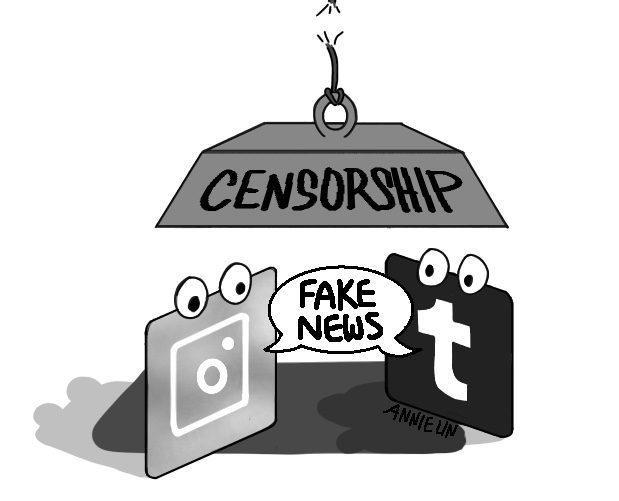OPINION: The New News Climate
“Fake News!” is a term that we, as Americans, have become particularly used to hearing, primarily due to conflicting political views present amongst the citizens of this country. As of late, news reporters in America have been accused of not only altering the news to work in their favor, but also of reporting incorrect information. In 1923 the American Society of Newspaper Editors adopted a Code of Ethics that has been a guiding force in professional journalism for nearly a century. In addition to stating that freedom of the press is to be guarded as an inalienable right, it states that journalists must act with sincerity, truthfulness, and accuracy. Today, however, it seems that many believe that journalists no longer heed their professional code.
First of all, it is essential to clarify that all rights have their limits. But these limits have actually been blurred due to social media, clashing political views, and the internet. As reported by Facebook’s official 2018 Q3 results, they now have a total of 2.27 billion monthly active users. Considering the sheer expanse of Facebook’s database, it is no surprise that most of the technological generation today agree that social media is their primary source of information for all topical affairs. According to the Pew Research Center, in 2016, 50% of the people from ages 18-29 use social media and the internet to receive their news. As we approach 2019, media and the internet have only grown in size. A momentous benchmark that highlights this idea of censorship is the repeal of net neutrality by Federal Communications Commission (FCC), a government agency responsible for regulating interstate communications. This vote against net neutrality meant that telecommunications operators are now are permitted to control what the viewers can, or cannot, access. As the internet is the primary information source for many, the FCC’s vote implies potentially limited communication of news.
On the other hand, in some cases, the public does support censorship. The ideal example for this is the criticism received by Facebook due to their lax response to disinformation campaigns and fake reports, which some believe affected the 2016 presidential election’s outcome. Several months ago, learning from their mistakes, and perhaps to restore their reputation, Facebook decided to take action and shut down 652 accounts and pages. Sheryl Sandberg, the COO of Facebook, claimed that these accounts “were pretending to be free press but they weren’t free press.” While it was met with a level of public discontent, this can be regarded as a significant step towards progress since it sets a precedent.
This idea of censorship also translates locally into our high school environment. High school is a time for students to discover a passion for journalism, believing that they will have unchecked freedom of the press, which is not always the case. This was reaffirmed by Supreme Court cases like Hazelwood School District v. Kuhlmeier in 1988, which determined that schools have the right to determine what is published in their best interest. Mr. Melvin, the Assistant Principal of Morris Hills High School, is responsible for ensuring a reasonable funneling of information through school activities. These include the content of the fall play, the spring musical, Mr. Morris Hills, and student-written productions. His goal is to “ensure that it is appropriate for the readership, which, in this case, is the entire student body, as well as their parents, guardians, relatives, and really, any other stakeholders in the community,” he says. Mr. Melvin sees this as an opportunity to establish an environment in which the school does not offend or hurt any person’s sentiments, while also ensuring that it does not hinder students’ creativity.


